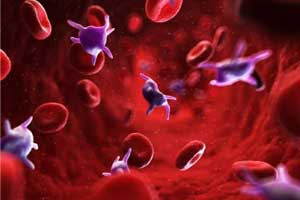- Home
- Editorial
- News
- Practice Guidelines
- Anesthesiology Guidelines
- Cancer Guidelines
- Cardiac Sciences Guidelines
- Critical Care Guidelines
- Dentistry Guidelines
- Dermatology Guidelines
- Diabetes and Endo Guidelines
- Diagnostics Guidelines
- ENT Guidelines
- Featured Practice Guidelines
- Gastroenterology Guidelines
- Geriatrics Guidelines
- Medicine Guidelines
- Nephrology Guidelines
- Neurosciences Guidelines
- Obs and Gynae Guidelines
- Ophthalmology Guidelines
- Orthopaedics Guidelines
- Paediatrics Guidelines
- Psychiatry Guidelines
- Pulmonology Guidelines
- Radiology Guidelines
- Surgery Guidelines
- Urology Guidelines
ASH Guideline on management of heparin-induced thrombocytopenia

The American Society of Hematology (ASH) has released a new guideline on the diagnosis and management of heparin-induced thrombocytopenia (HIT). The guideline covers various aspects of the condition including the screening of asymptomatic patients for HIT, diagnosis and initial management of patients. It has been published in the journal Blood Advances.
Heparin-induced thrombocytopenia (HIT) is an adverse drug reaction mediated by platelet-activating antibodies that target complexes of platelet factor 4 and heparin. Patients are at markedly increased risk of thromboembolism.
The guideline covers various aspects of the condition including the screening of asymptomatic patients for HIT, diagnosis and initial management of patients with suspected HIT, treatment of acute HIT. It incorporates the use of direct oral anticoagulants as additional options for non-heparin anticoagulants.
- Some key recommendations include:
- The use of the 4Ts score is recommended in patients with suspected HIT rather than a gestalt approach to estimate the probability of HIT. If there is an intermediate- or high-probability 4Ts score, an immunoassay should be done. The guideline, however, cautions that every effort should be made to obtain accurate and complete information necessary to calculate the 4Ts score. If key information is missing, it may be prudent to err on the side of a higher 4Ts score.
- In patients with suspected HIT and a low probability 4Ts score, the guideline recommends against empiric treatment of HIT (i.e., against discontinuation of heparin and initiation of a non-heparin anticoagulant)
- Heparin should be discontinued and a non-heparin anticoagulant at therapeutic intensity should be initiated in patients with suspected HIT and a high-probability 4Ts score.
- In patients with acute HIT complicated by thrombosis (HITT) or acute HIT without thrombosis (isolated HIT), discontinuation of heparin and initiation of a non-heparin anticoagulant is recommended.
- Patients with acute HITT or acute isolated HIT should be treated with a non-heparin anticoagulant at therapeutic-intensity dosing rather than prophylactic-intensity dosing.
- In patients with acute HIT or subacute HIT A (with normal platelet count) who require cardiovascular surgery, the procedure should be delayed until the patient has subacute HIT B or remote HIT.
- In patients with acute HIT who are receiving renal replacement therapy and require anticoagulation to prevent thrombosis of the dialysis circuitry, treatment with argatroban, danaparoid, or bivalirudin rather than other non-heparin anticoagulants is recommended.
- In patients with remote HIT who require treatment or prophylaxis for venous thromboembolism (VTE), a non-heparin anticoagulant (e.g., apixaban, dabigatran, danaparoid, edoxaban, fondaparinux, rivaroxaban, or vitamin K antagonists [VKA]) should be administered rather than unfractionated heparin (UFH) or low molecular weight heparin (LMWH).
- Treatment with bivalirudin rather than a different non-heparin anticoagulant is recommended in patients with acute HIT or subacute HIT A who require percutaneous coronary intervention (PCI).
- In patients with acute isolated HIT, bilateral lower-extremity compression ultrasonography is suggested to screen for asymptomatic proximal deep venous thrombosis (DVT).
- Anticoagulation is continued, at a minimum, until platelet count recovery (usually a platelet count of ≥150 3 109 /L) in patients with acute isolated HIT and no asymptomatic DVT identified by screening compression ultrasonography.
These evidence-based guidelines of the American Society of Hematology (ASH) will go a long way to support patients, clinicians, and other health care professionals in their decisions about diagnosis and management of HIT.
For further reference log on to:
DOI: 10.1182/bloodadvances.2018024489

Disclaimer: This site is primarily intended for healthcare professionals. Any content/information on this website does not replace the advice of medical and/or health professionals and should not be construed as medical/diagnostic advice/endorsement or prescription. Use of this site is subject to our terms of use, privacy policy, advertisement policy. © 2020 Minerva Medical Treatment Pvt Ltd